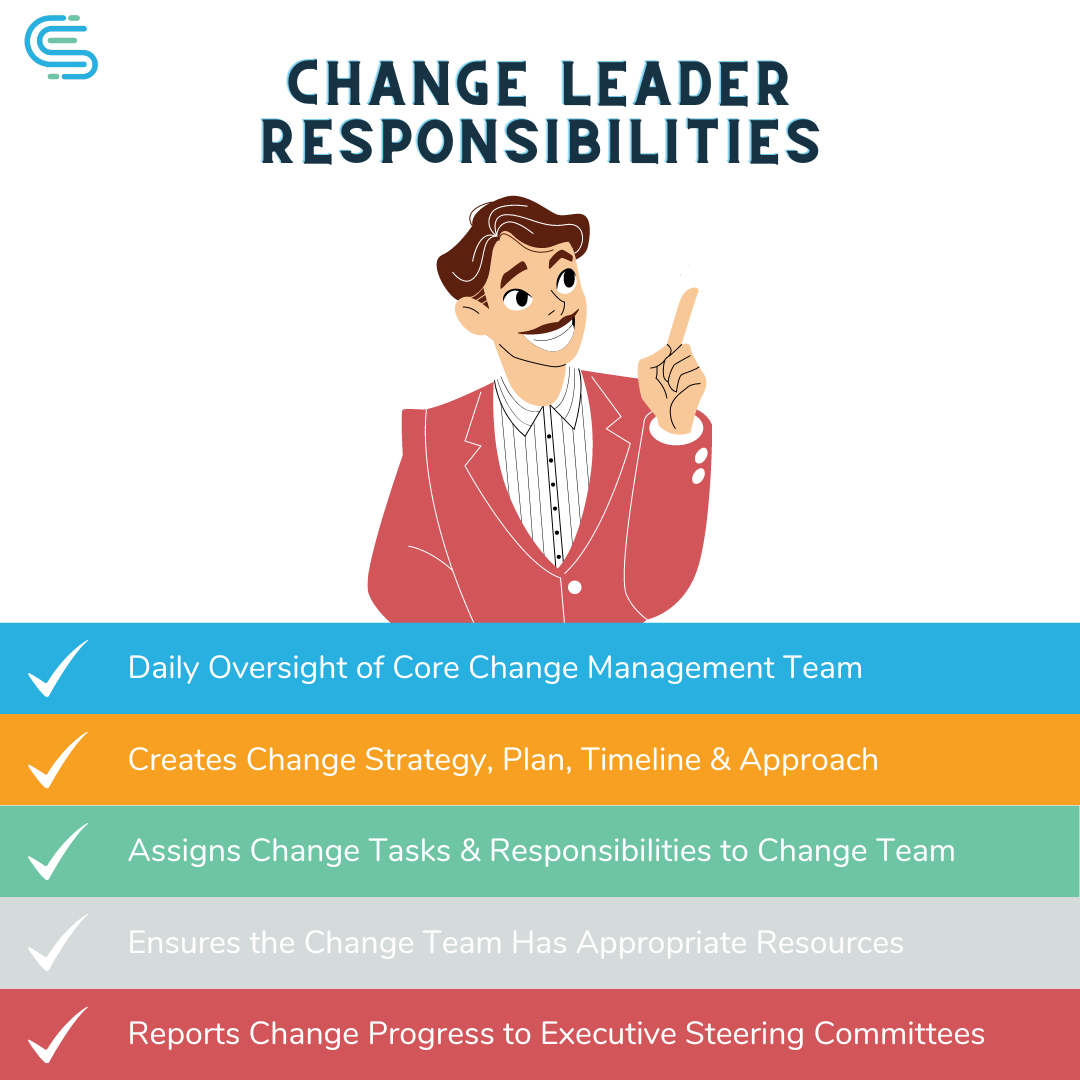Building a Change Management Team? Don't Forget These 4 Essential Roles!

Are you building a change management team for your organization but struggling to figure out what roles and skills are needed? Here are some tips to keep in mind!
Before you begin
Change management leaders, support staff, and change advocates are key contributors to change success. In fact, dedicated change team members are one of our 7 Key Components of Change Management Infrastructure.
You'll need dedicated manpower to support organizational change, regardless of the change type, impact, scale, and timeline. Specific types of change require unique skill sets and roles, which means you’ll need to clearly understand the change mission, goals, and desired outcomes before assembling a team. This is because the change approach and responsibilities for a technology implementation might look different than those of a merger or acquisition.
As you work to define the change purpose and desired outcomes, keep these questions in mind:
How does the change support the overall mission, values, and culture of your organization?
What problems or challenges will the change solve?
What are the goals or outcomes your leaders hope to accomplish?
What are the jobs, business functions, or departments affected by the change?
What does change success look like?
Answering these questions helps you understand and outline the steps, tasks, and work needed to accomplish specific change goals. There will be some overlap, but these tasks should help you assign responsibilities and identify the skillsets needed on your team.
Change management is not just a soft skill!
You’ll need to be thoughtful about who you choose because change leadership requires much more than a sprinkling of communications and a handful of trainings. Change management applies a structured process, specific tools, and targeted resources to provide clarity, awareness, and knowledge to people going through a change. It leverages principles and skills across several disciplines. Importantly, distinct roles, resources, and expertise are leveraged at specific times throughout the lifecycle of a change project. These skills include:
- Project management
- Strategy and operations
- Communications
- Learning and development
- Data analysis
- Risk management
Your change team should be comprised of some or all of these, depending on the complexity, timeline, mission, and goals of the change.
Who’s on first?
Below, we’ve listed some of the essential roles and responsibilities to assemble when you create a change team. Change management involves a robust system of dedicated resources and support roles. The people dedicated to the heavy lifting and daily work are members of your core change team. Depending on your organization’s timeline, budget, and resource constraints, this can be a combination of internal staff and consultants. Eventually, the core team will rely on support roles across the organization to drive communication and engagement.
Primary Sponsors:
Think of these senior leaders, managers, or executives as the face of the change. They were likely involved in authorizing the change and are held responsible for its success.
Sponsors use their authority, influence, and credibility within the organization to legitimize change efforts, publicly show support, and drive engagement with impacted groups.

Change Leaders:
These are dedicated resources who lead the core change management team. They have high levels of change experience, determine the overall change approach and strategy, and hold their change team accountable to timelines, budgets, progress, and success outcomes.
Change Leaders are actively involved in daily change work, they keep team members motivated, and work directly with other leaders, sponsors, and project staff.

Change Team Members:
These are dedicated resources who form part of the core change management team. They create, perform, or deliver specific change tasks, materials, activities, analysis, reports, and other functions.
These are the people who create and deliver your change efforts and initiatives. They can be a combination of change practitioners and specialized staff performing specific functions like communications, training, organizational design, or risk management.

Change Advocates and Champions:
These are influential leaders, managers, and employees who support the core change team and function as liaisons between them and impacted groups. Champions model desired change behaviors for other employees, help answer change questions, identify areas of risk, and monitor change progress in their groups.
Although not formally part of the core change team, they’re an extension of it and are expected to participate in important change activities, helping to ensure change efforts are successful across the organization. Advocates and champions are essential because they act as “boots on the ground.” They use their influence, institutional knowledge, and experience to create awareness and support for the change at a grassroots level.

Dedicated change team members are just one of ChangeSync’s 7 Key Components of Change Management Infrastructure.
Change management infrastructure encompasses all the staff, methodologies, systems, tools, and processes needed to deliver change across an organization.

